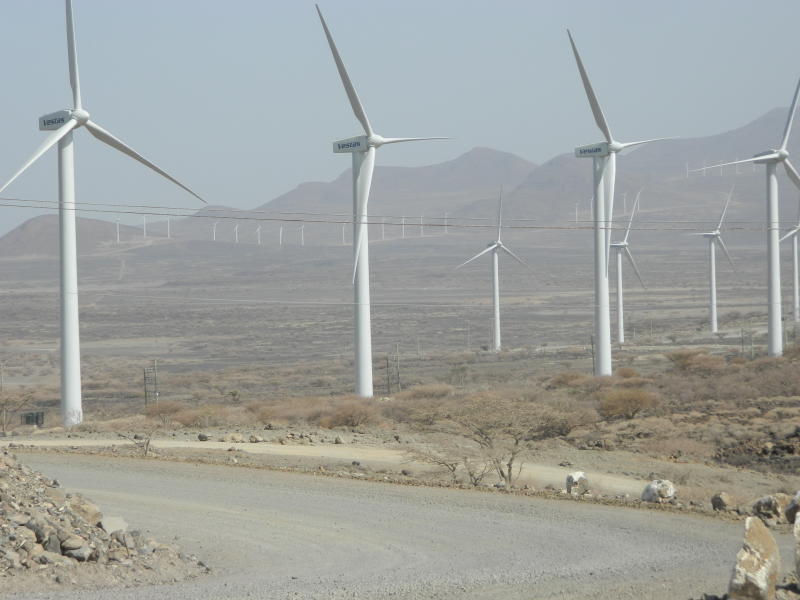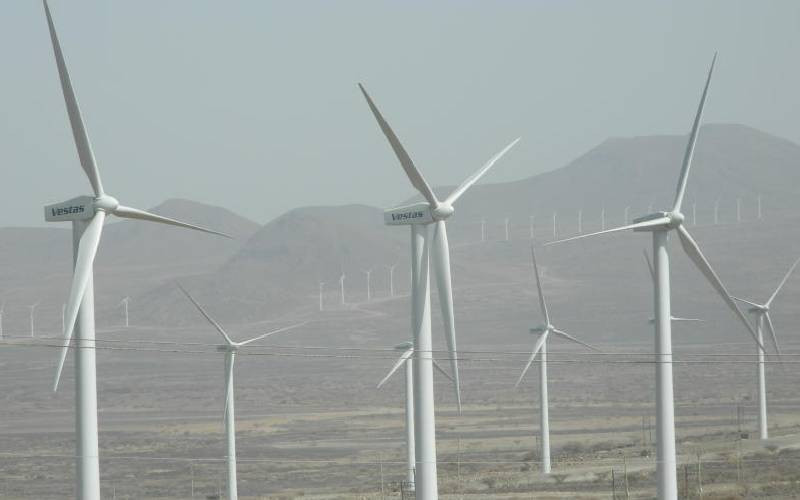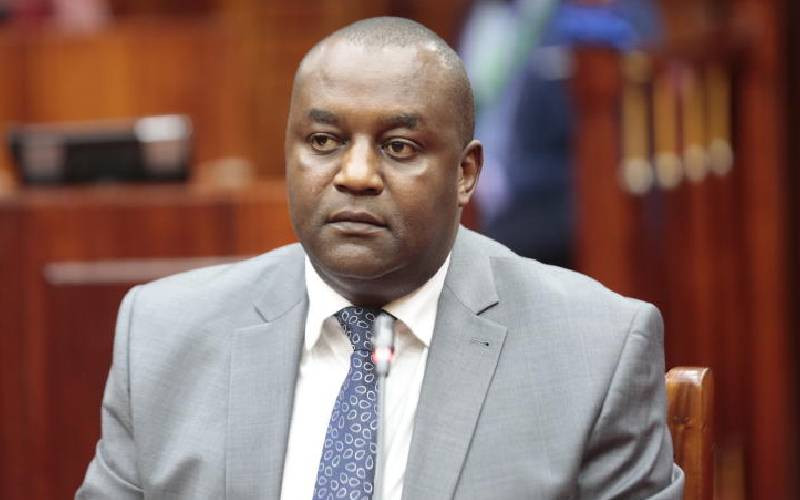
NAIROBI, KENYA: Rising concerns over global warming, environmental pollution, and energy security have increased interest in developing renewable and environmentally friendly energy sources such as wind, solar, hydro, geothermal, and biomass as the replacements for fossil fuels.
Wind energy is indeed one stone that Kenya can use to kill the two birds; climate change and energy crisis since it essentially eliminates emissions of the Greenhouse gases and other harmful wastes associated with thermal and coal-fuel power plants or radioactive wastes in nuclear power plants. Moreover, Kenya can also earn millions of dollars in terms of carbon trading by exploring and investing in clean energy like wind power.
The country also stands to benefit a lot by diversifying the energy mix with a dramatic reduction of dependence on fossil fuels that are expensive and are prone to constant price increase, and supply instability.
With diverse sources, the country will therefore have more than 15 per cent of its energy mix coming from Wind power especially after the commissioning of all the major Wind farms currently under development. Apart from strengthening its energy security, a significant reduction on the Fuel Cost Charge will make electricity cheaper for Kenyans and attract industrial investors.
Kenya is not alone in the path to tap wind energy; the last three decades has seen tremendous growth in wind power projects worldwide resulting in rise in annual installed wind generation capacity of 158 GW in 2009 to the current 197 GW and it still continues to rise.
In Africa though, Kenya’s star is even brighter especially after fully commissioning the 310MW Lake Turkana Wind power in Loiyangalani Marsabit County which is the largest wind farm on the continent. Added to the 100MW Kipeto Wind Power currently under development in Kajiado County, this will supplement the 25MW KenGen Ngong wind power which is already commissioned and connected to the grid, indeed Kenya is playing a different league in renewable energy in the continent.
The country’s grid connection with other regional power pools for energy trading makes a potential revenue source for the country to recoup the multibillion investments put in these projects.
Wind energy represents a mainstream energy source of new power generation and an important player in the world's energy mix. As a leading current energy technology, wind power’s technical maturity and speed of deployment has been acknowledged as one of the most innovative technology in the recent times especially since there is no practical upper limit to the percentage of wind that can be integrated into the electrical energy system. In fact, wind energy in principle could meet the entire energy needs of the whole world if properly annexed and utilized.
Compared with traditional energy sources, wind energy has a number of benefits as an inexhaustible and free energy source, it is available and plentiful in most regions of the earth and in many other areas in Kenya like Kajiado and Marsabit counties. In addition, more extensive use of wind power would help reduce the demands for fossil fuels, which is not permanent but gets depleted day by day.
Furthermore, the cost per kWh of wind power is much lower than that of solar power and other energy sources like geothermal, thermal etc. Thus, as the most promising energy source, wind energy is believed to play a critical role in global power supply in the present and the next century.
Wind results from the movement of air due to atmospheric pressure gradients. Wind flows from regions of higher pressure to regions of lower pressure. The larger the atmospheric pressure gradient, the higher the wind speed in meters per second and thus, the greater the wind power that can be generated from the wind by means of wind energy-converting machinery (wind turbines).
It’s a resource that has been used since the era of ancient civilisation by early Chinese and Portuguese sailors to drive their ships to various destinations and by the early black smiths to blow their furnaces for smelting metals as well as in the modern times through the wind turbines to generate power and even in wind mills located in various locations for water pumps.
The first automatically operated wind turbine in the world was designed and built by Charles Brush in 1888 a Danes Engineer. This wind turbine was equipped with 144 cedar blades having a rotating diameter of 17 metres. It generated a peak power of 12 kW to charge batteries that supplied DC current to lamps and electric motors then.
Today, modern wind turbines in various wind farms including Kenya, have typically three blades, operating at relatively high wind speeds for the power output up to several megawatts. The most common wind turbine in Kenya today is VESTA type with a rotating blade diameter of 52m hence Vesta V 52. Each blade has a length of 25m and the hub has a diameter of 2m. This type is the ones used for Lake Turkana wind power in Loiyangalani each with a generating capacity of 850kw at 415volts. (There are 365 turbines giving installed power capacity of 310MW).
Stay informed. Subscribe to our newsletter
A modern wind turbine is an energy-converting machine to convert the kinetic energy of wind into mechanical energy and in turn into electrical energy. Various wind turbine concepts have been developed and built for maximizing the wind energy output, minimizing the turbine cost, and increasing the turbine efficiency and reliability and also taking into consideration, the variation in wind speed.
Despite its numerous advantages, wind energy can also introduce a huge impact in the grid, like voltage and frequency instability due to fluctuations of wind speed at different times of the day, but this can be well managed at the point of coupling by the installation of Static Synchronous compensators commonly referred as STATCOMS and other voltage stability techniques.
Alfred Gogi- is a power Transmission Engineer, and a PhD student on Project planning and Management.
Email: [email protected]
 The Standard Group Plc is a
multi-media organization with investments in media platforms spanning newspaper
print operations, television, radio broadcasting, digital and online services. The
Standard Group is recognized as a leading multi-media house in Kenya with a key
influence in matters of national and international interest.
The Standard Group Plc is a
multi-media organization with investments in media platforms spanning newspaper
print operations, television, radio broadcasting, digital and online services. The
Standard Group is recognized as a leading multi-media house in Kenya with a key
influence in matters of national and international interest.
 The Standard Group Plc is a
multi-media organization with investments in media platforms spanning newspaper
print operations, television, radio broadcasting, digital and online services. The
Standard Group is recognized as a leading multi-media house in Kenya with a key
influence in matters of national and international interest.
The Standard Group Plc is a
multi-media organization with investments in media platforms spanning newspaper
print operations, television, radio broadcasting, digital and online services. The
Standard Group is recognized as a leading multi-media house in Kenya with a key
influence in matters of national and international interest.







